A Crash Course on Overnight Cloth Diapering
This post may contain affiliate links. View my disclosures page for more information.
Whew, you survived Cloth Diaper 101 and you’re back for more! In this installment of my crash course on cloth diapering, I’m going to talk about absorbency for overnight cloth diapers. Let’s dive in!
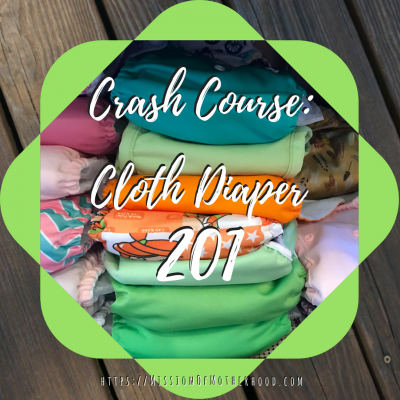
Other posts in this course:
Cloth Diaper 101: getting started with cloth diapers
Cloth Diaper 201: overnight cloth diapers
Cloth Diaper 301: storing, cleaning, and laundering your cloth diapers
Cloth Diaper 401: cloth wipes, and diaper safe creams, powders, and combatting diaper rash
Cloth Diaper 501: troubleshooting cloth diapers: strip, yeast, and bleach soaks
Cloth Diaper 601: repairs and modifications to your cloth diapers
Disposable vs. Cloth
I used cloth diapers at night with my oldest from 6-9 months, but I didn’t have many so I had to fill regular diapers with so many boosters that she just didn’t fit in her jammies. She was still waking several times a night until her first birthday, and it was a lot to feed her, change her, and get her back down, so I eventually dropped overnight cloth diapers for disposables with her. Sleep is precious, and I needed all the help I could get for both of us.
Disposables DO hold more liquid, there is no denying that: the little “beads” or gel inside the disposables can become super-saturated, meaning they can hold more than their volume in liquid. Cloth diapers are like a sponge: once they’re completely saturated, they stop holding the liquid, so they’ll begin to leak. Cloth diapers do a better job of containing solids, though, along with the other economic and environmental benefits.
With my second, however, I was able to cloth diaper her overnight from the beginning for a lot longer because I had more available to me and I’d learned a lot. Her sleeping patterns overnight were better, and because she wasn’t waking to nurse all night long, she wasn’t wetting so much throughout the night, so her diapers lasted longer.
Here are a few of the overnight cloth diaper solutions that have worked for us thus far.
Fitted Diapers
I found fitted diapers with an extra booster or two and a cover for overnights to work the best for my kids. Fitted diapers are 2-parts: the fitted absorbent diaper and the waterproof outer shell cover. Fitted diapers can be bought premade with gussets and snaps, converted from a prefold (this is definitely advanced-level diapering), or converted from a flour sack towel. Fitted diapers are absorbent all the way around (front/back/sides/hips/bottom) vs just the straight crotch area of “regular” cloth diapers.
Some fitteds come with extra inside boosters, or you can add your own. YOU NEED A COVER OVER A FITTED DIAPER or your babe will just get everything wet. Fitted diapers are absorbent but NOT waterproof! I made the mistake of raving about how absorbent these fitted diapers were to a friend but failed to mention the crucial point about the cover, and I dunno how many sheets and jammies my poor tired friend had to change in the middle of the night before it occurred to me that I’d forgotten to tell her they needed a cover!
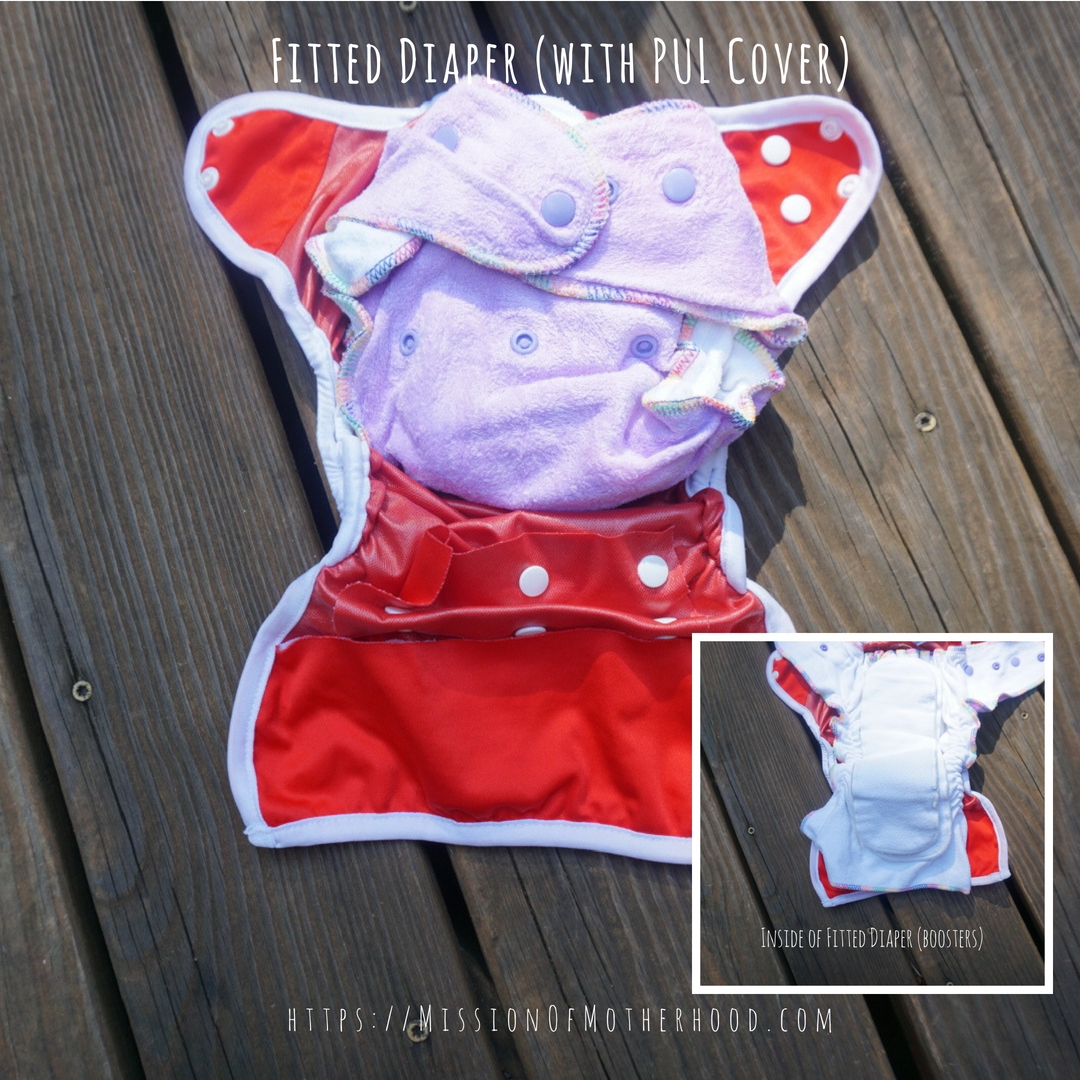
The fitted diaper pictured above is one of 4 that I have in this style, and I love them. They are SO absorbent and work better than some of my “overnight solution” diapers (more on that in Cloth Diaper 201). I got it from www.patpat.com, and you can get 25% off your first order if you use my referral code at checkout: fhkvAI. Another good one to try is EcoAble from Amazon. You can add more boosters as you need to.
Prefold Diapers
There are ways to fold a prefold diaper in such a way that it functions as these fitteds do (like here), but I find the convenience and absorbency of these fitteds far outweigh any cost savings from prefolds. You can also make fitted diapers by either converting a prefold to a fitted (instructions here), if you are good with a sewing machine or have the time/resources to do this.
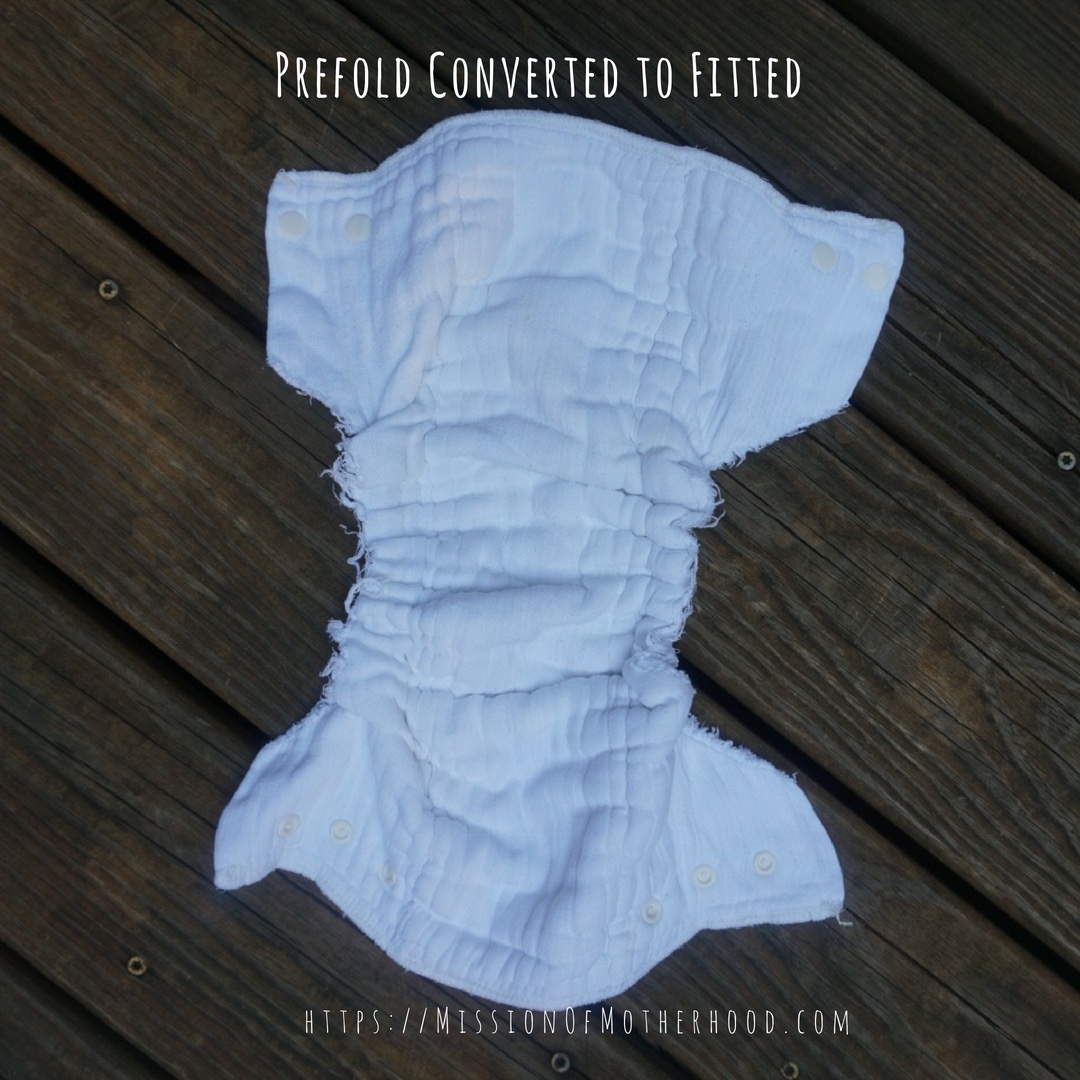
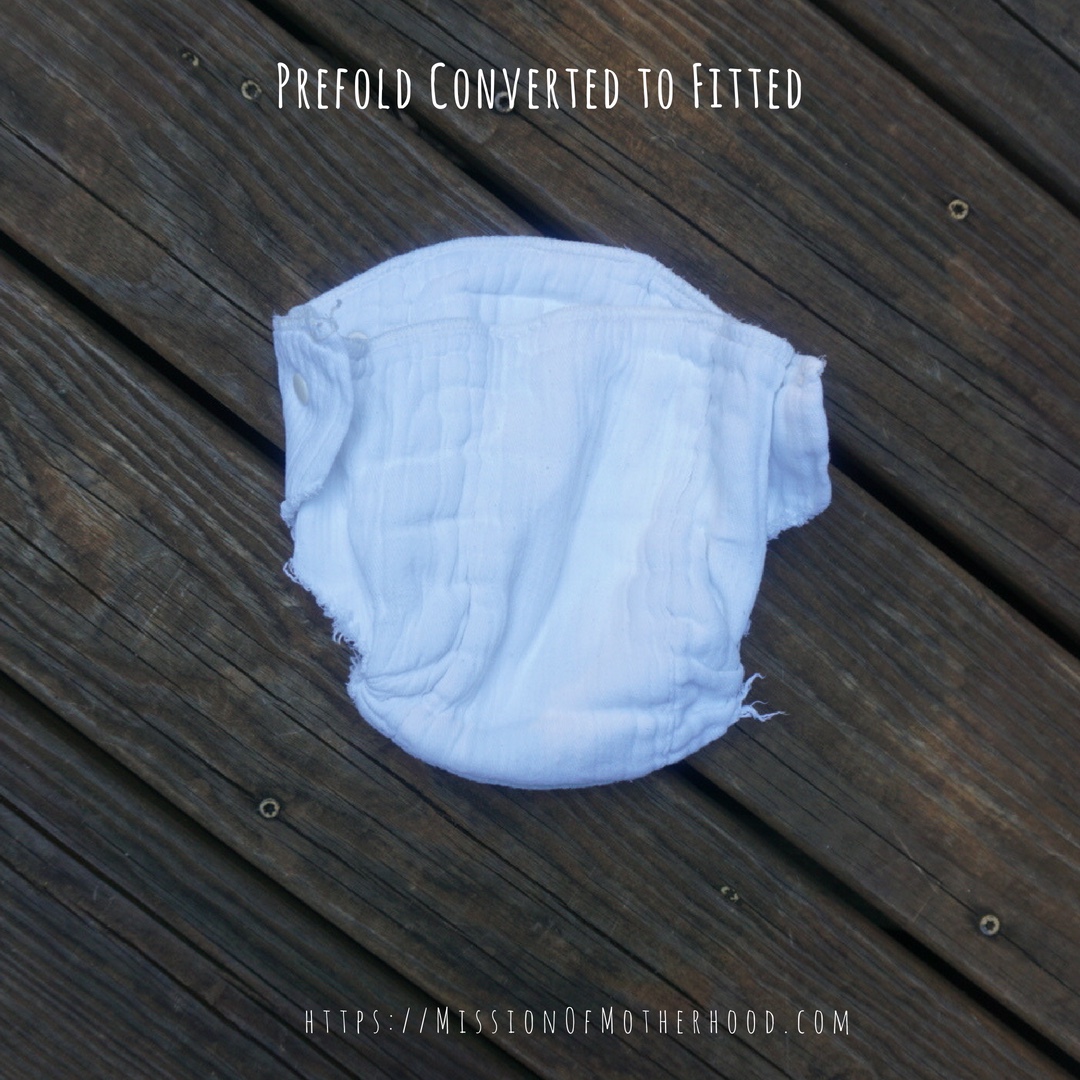
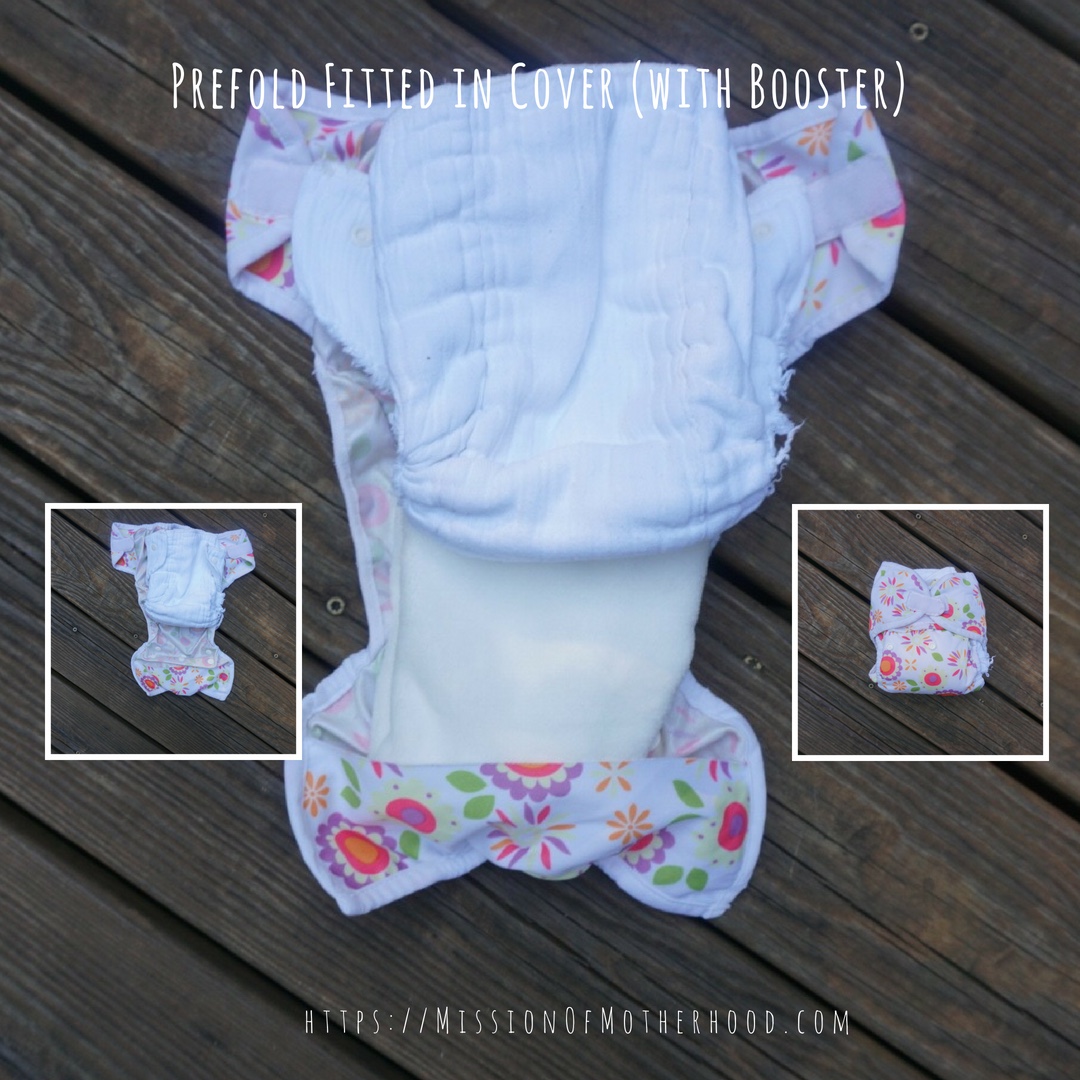
Flour Sack Towels
Another way to make a fitted diaper is by folding a flour sack towel (FST) in an origami fold under a diaper cover, which I love, because the thin cotton FST actually holds a ton of liquid and cleans/dries quickly. You can also fold more than 1 FST together to increase absorbency, or stuff the cover with a booster. I included a quick picture of the FST origami fold inside a cover, with more instructions below. In the instruction panel, you can see I wrapped an absorbent microfiber towel inside the cotton FST, so since the MF is covered by cotton, it won’t irritate the baby’s skin.
One or even two FSTs origami folded will NOT be enough to last overnight for most babies, but it is a good way to add absorbency all the way around the baby. I like this method with a super booster like Best Bottoms, or some other hefty kind of hemp/overnight insert.
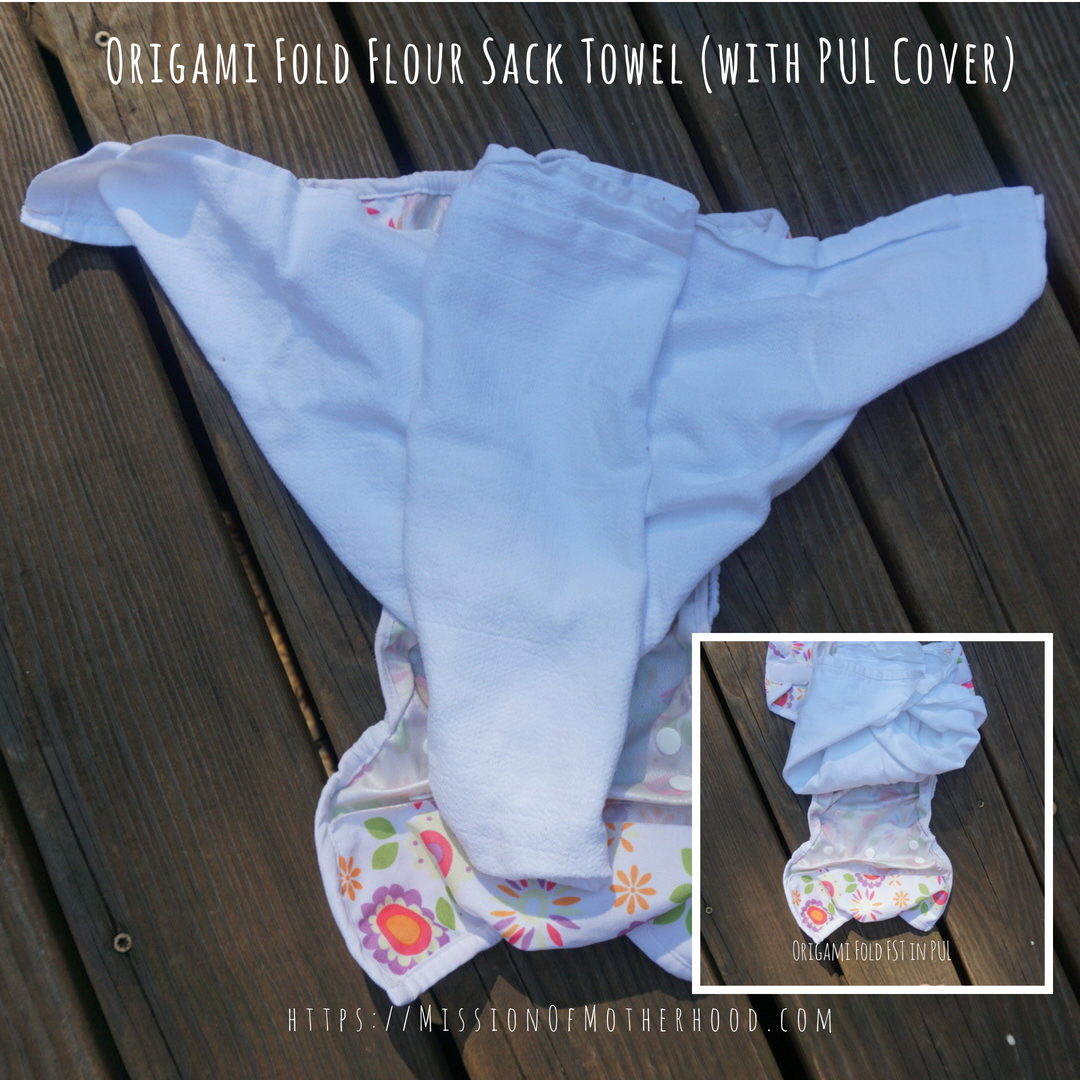
Here is my attempt at showing you in a simple set of pictures how to do this magical origami fold. I tried to show how the wings wrap around from behind the baby over the “pad” middle that folds up the front. You can secure with an old-school style diaper pin (which always scared the poo out of me, so I never tried it!) or a snappi.
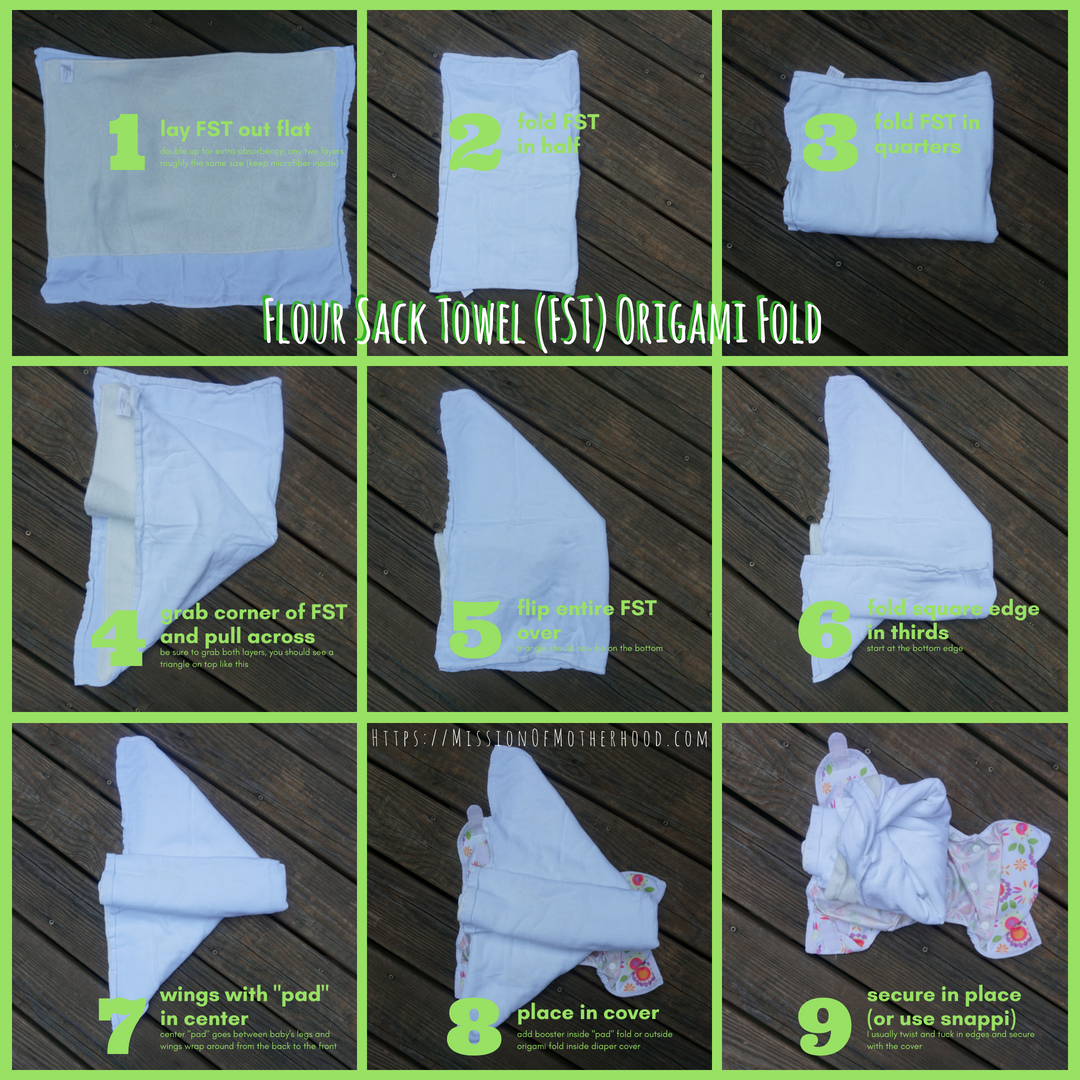
Inserts & Doublers
Since I primarily use pocket diapers, I’ll add an overnight or heavy booster or “doubler” to my super absorbent diapers. For boys and tummy sleepers, you want to make sure the extra absorbency is added in the front of the diaper, not between the legs. Some people add up to 3 doublers, but this makes for some VERY bulky diapers. Bulk can increase discomfort and decrease a baby’s mobility (which may or may not be a bad thing, ha!).
Hemp or other natural fibers are GREAT for overnight solution because they’re trim but SUPER absorbent. The challenge is that they take a LONG time to dry, so have a few on hand so they can take an extra day or so to dry before being used again. As with the overnight diapers above, you may find you need to pre-rinse some of them before placing them in the diaper pail to help get rid of some of that extra pee.
Some of my favorite overnight doublers (snap-in AI2’s or pocket inserts) are Heavy wetter, Thirsties, BestBottoms, but there are a ton out there. As with the overnight diapers below, these heavy duty doublers hold a TON of liquid, so you may find you need to prerinse them before you put them in the pail to get all the pee out, and you may also find they take a lot longer to dry, so having a few on hand for your rotation will be helpful.
Overnight Diapers
Some companies actually make diapers for overnight. The ones I have liked the best are Grovia ONEs, because the cover has some absorbency and there are 2 contoured snap-in pads, but they are not customizable without adding a TON of bulk, which isn’t always comfortable or feasible for every parent/child. (I don’t like that Grovia snaps are proprietary and don’t fit with any other snaps; all the other brands fit and are more or less interchangeable). I also find because they hold more, they can be tougher to clean. They hold a LOT of pee! I have to prerinse them before they go into the laundry pail or else they don’t rinse completely in the wash, which overtime leads to some stinky “clean” diapers. Don’t get me wrong, these are a GOOD diaper, and even if I don’t use them for nighttime, I like them for longer car rides or trips out because they are SO absorbent. They even have an added bonus of a snap-to-Velcro-enclosure converter to help you get a better fit.
If your child is waking every few hours, you can probably get away with a regular daytime cloth solution with 1-2 extra inserts rather than an over night solution. Since they’re up anyway, you can change them more often. This takes more time, of course, but saves you money. Overnight diapers are significantly more expensive than the others, but understandably so: they hold more and last longer. The trouble is you need several, and that definitely adds up quickly.
Wool Diapers
Wool is naturally waterproof, breathable, soft, sustainable, good for the environment, free of petroleum products, and maybe even recycled or organic, so you can see that this is a GREAT FIT for a lot of parents. Wool covers absorb a TON and don’t smell, and best of all since they are actually PANTS or SHORTS they tend to fit over even the bulkiest fitteds/inserts.
However, I have never tried wool, because I am allergic to lanolin (which is required for using a wool cover) and I didn’t want to find out if my babes were, too. Even though my second was born in NC in the dead of summer, and it seemed like wool would be too itchy or hot, the people who use wool love it and say that’s not the case — they swear by it as an overnight solution for heavy wetters!
I’ve learned by now not to knock it before you try it, but since I can’t review that for you, I’m going to direct you to some resources where you can learn more about wool, lanolizing, etc. They do require a special wash routine/process because of the lanolizing, but they don’t need to be washed every time they’re used. More here: pootersdiapers, FluffLove, and more.
That’s a Wrap!
What did I miss? Any other CD moms use a different solution for overnights? How did it work for you? What would you expand upon here? Tell me in the comments!


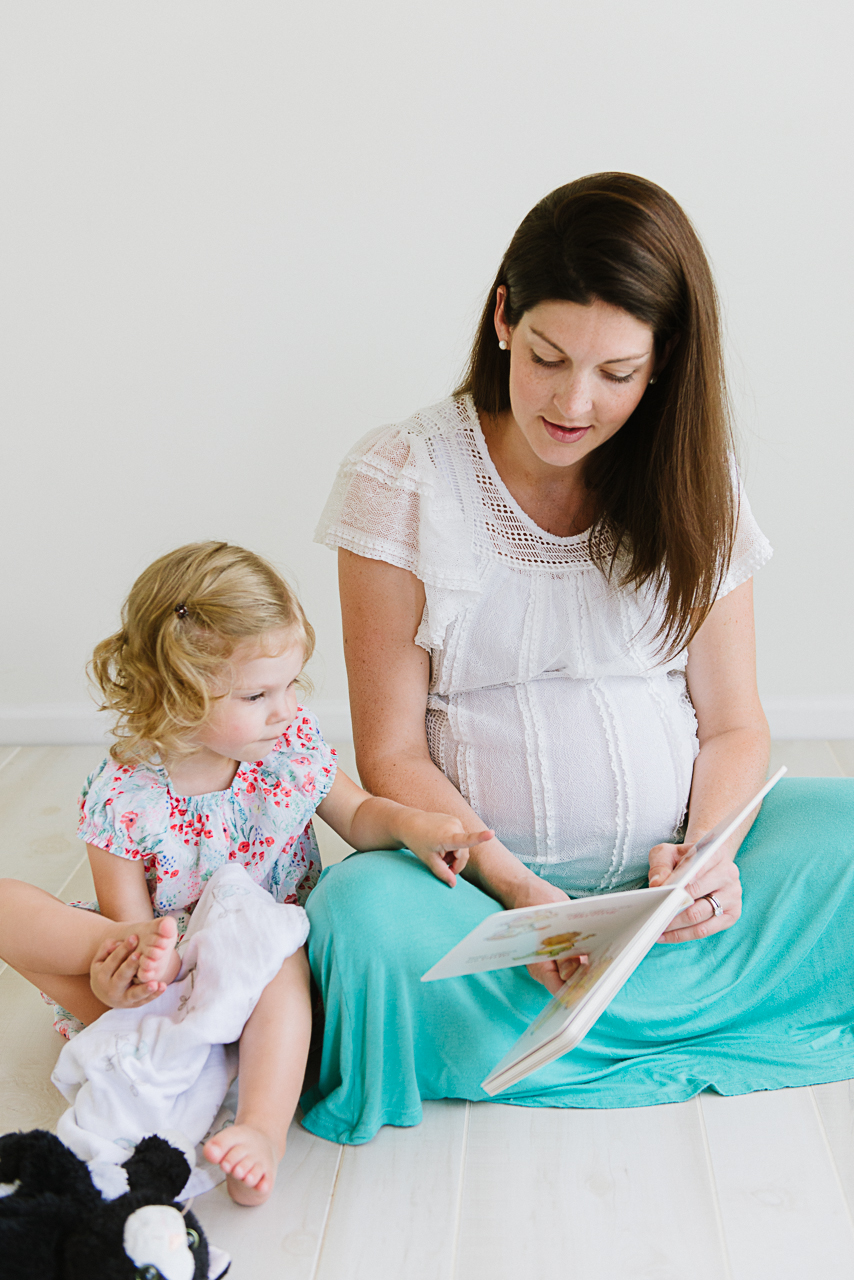
Thanks for sharing this info. now I now the difference!